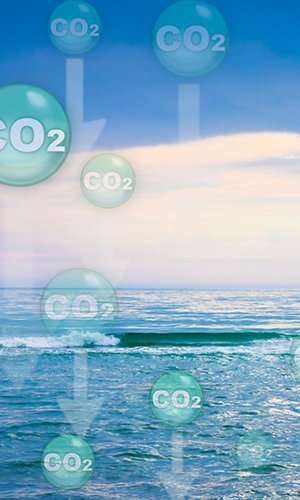No, it is not the birthday of the oldest woman in the world, but the anniversary of the birth of Eunice Newton Foote, the scientist who first understood the role of carbon dioxide as one of the factors causing the warming of the earth's atmosphere. Born 200 years ago in Connecticut, USA, she is remembered not only for her seminal contribution to climatology but also for her activism in favour of women's rights. The scientist's story is a sadly clear example of the low regard the scientific world of the time had for female scholars. Her discovery, in fact, was not taken into account by the academic world and was only recognised many years after her death. A sad story reminiscent of those of other female scientists, such as Rosalind Franklin who contributed to the discovery of the structure of DNA without anyone giving her credit.
How did Newton Foote clarify the role of CO2 in the atmosphere? The scientist prepared some glass bottles that she emptied with a vacuum pump. She put several gases inside, one per bottle, and placed the containers in the sun to measure their temperature. She discovered that the bottles filled with carbon dioxide heated up faster than the others and retained heat for a while even after she had taken them out of the sun. Basically, she had built small greenhouses where the gas caused the temperature to rise. And 'greenhouse effect' is the name of the phenomenon, a definition with which we are unfortunately familiar, especially in these scorchingly hot days: during the first week of July 2023, the average temperature of the planet exceeded 17 degrees Celsius and was the highest ever.
A greenhouse is a closed, controlled environment where plants grow at constant temperature and humidity. It is a method of cultivation that cancels the effects of the seasons because the weather inside the greenhouse is always fine. The system works because of the transparent glass or plastic roof and walls that trap the heat of the sun inside the greenhouse. The greenhouse effect does something similar: greenhouse gases trap some of the sun's energy in the atmosphere and warm the planet.
Carbon dioxide is the gas that contributes most to the greenhouse effect (60%), followed by methane (20%), ozone (15%), nitrogen oxides (10%) and chlorofluorocarbons (5%). While excess carbon dioxide comes from the combustion of fossil fuels, ozone, methane and nitrogen oxides are largely of natural origin. Chlorofluorocarbons are man-made; they are gases once used in refrigerators and aerosol sprays and, given that they caused the notorious hole in the ozone layer, they were banned in 1990, but they are resistant gases and those still in circulation continue to cause damage. The greenhouse effect is a good thing because it warms the planet and makes life on Earth possible. Without the greenhouse effect, the average temperature of our planet would be -19 C°.
Due to the greenhouse effect, the average temperature of the planet has risen by over one degree Celsius during the last century. It may seem to be just another negligible figure but it is very close to the safety threshold of 1.5°C indicated during COP21 in 2015 and written into the Paris Climate Agreement. The climate is a very delicate mechanism that depends on numerous cogs: changing any one of them could have unpredictable consequences. Some consequences, however, are already clear. Eunice Newton Foote had already realised this.







